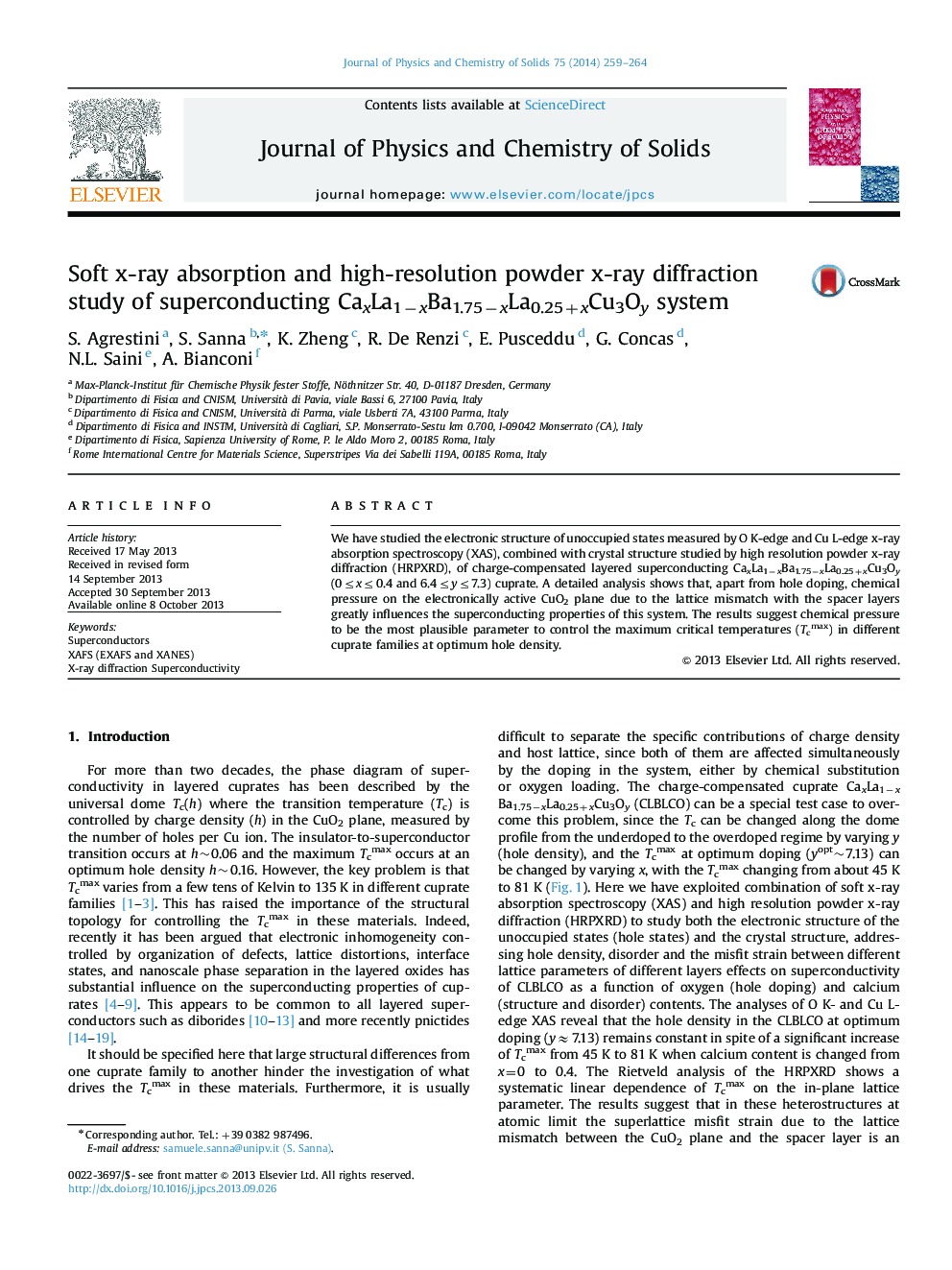| Article ID | Journal | Published Year | Pages | File Type |
|---|---|---|---|---|
| 1516179 | Journal of Physics and Chemistry of Solids | 2014 | 6 Pages |
•What drives the Tcmax in different families of high Tc superconductors is still an open question.•Both electronic and crystal structures of the charge compensated CaxLa1−xBa1.75−xLa0.25+xCu3Oy (CLBLCO) high Tc superconductor are studied.•We report on the role of hole density, disorder and structural misfit strain on superconductivity.•We demonstrate that the misfit strain, driven by chemical pressure, is the most likely parameter governing Tcmax in cuprates.
We have studied the electronic structure of unoccupied states measured by O K-edge and Cu L-edge x-ray absorption spectroscopy (XAS), combined with crystal structure studied by high resolution powder x-ray diffraction (HRPXRD), of charge-compensated layered superconducting CaxLa1−xBa1.75−xLa0.25+xCu3Oy (0≤x≤0.4 and 6.4≤y≤7.3) cuprate. A detailed analysis shows that, apart from hole doping, chemical pressure on the electronically active CuO2 plane due to the lattice mismatch with the spacer layers greatly influences the superconducting properties of this system. The results suggest chemical pressure to be the most plausible parameter to control the maximum critical temperatures (Tcmax) in different cuprate families at optimum hole density.
